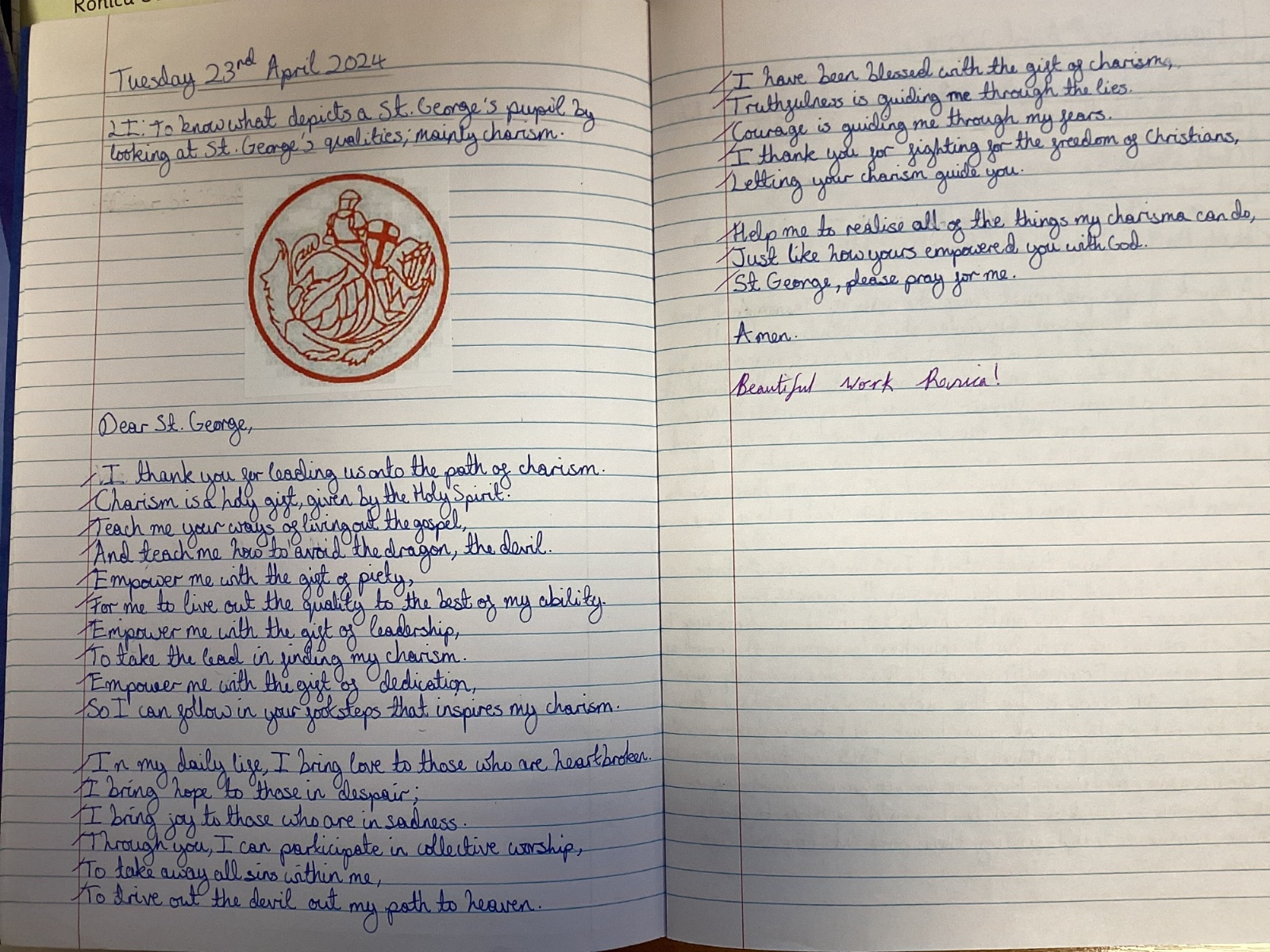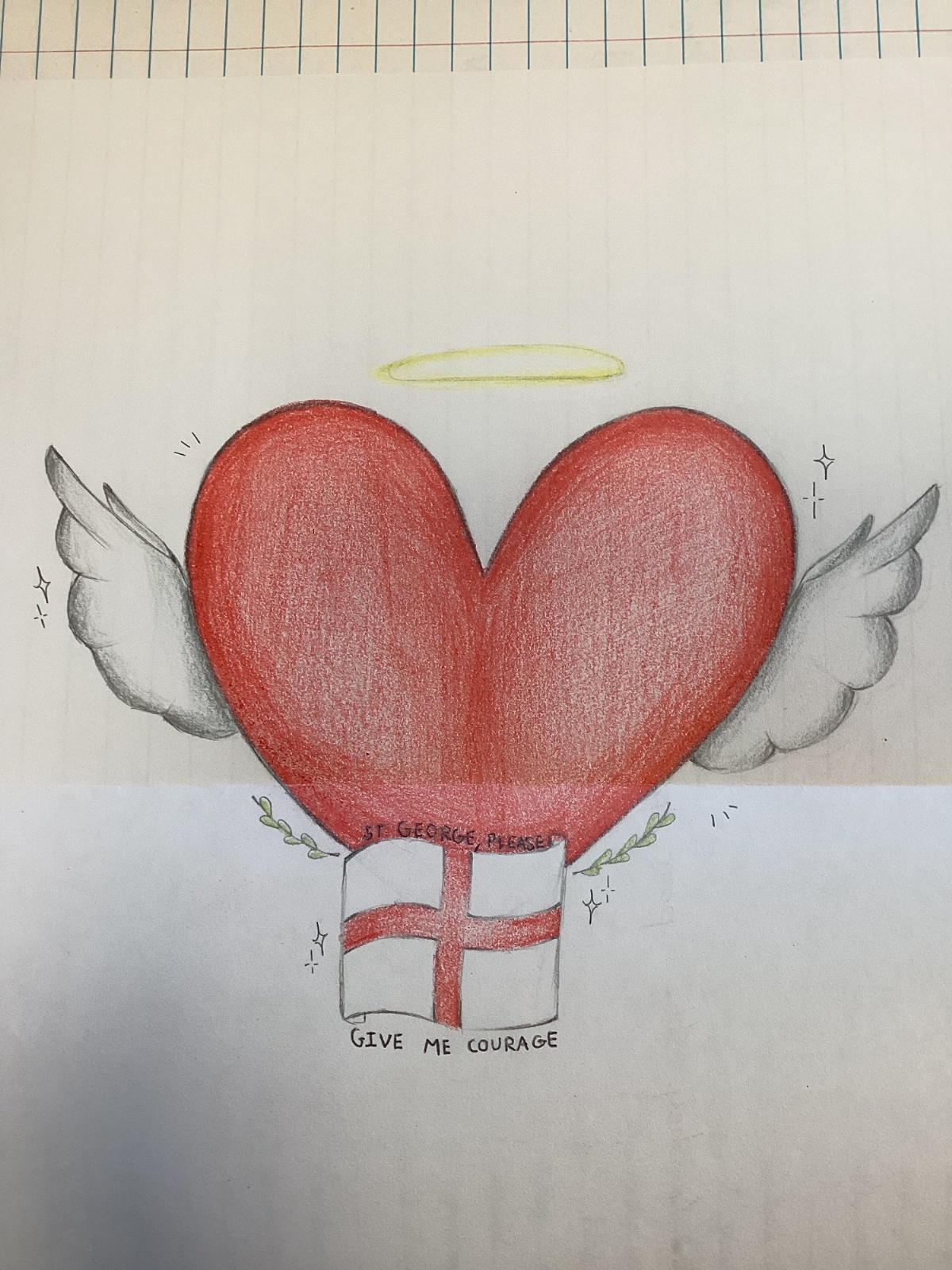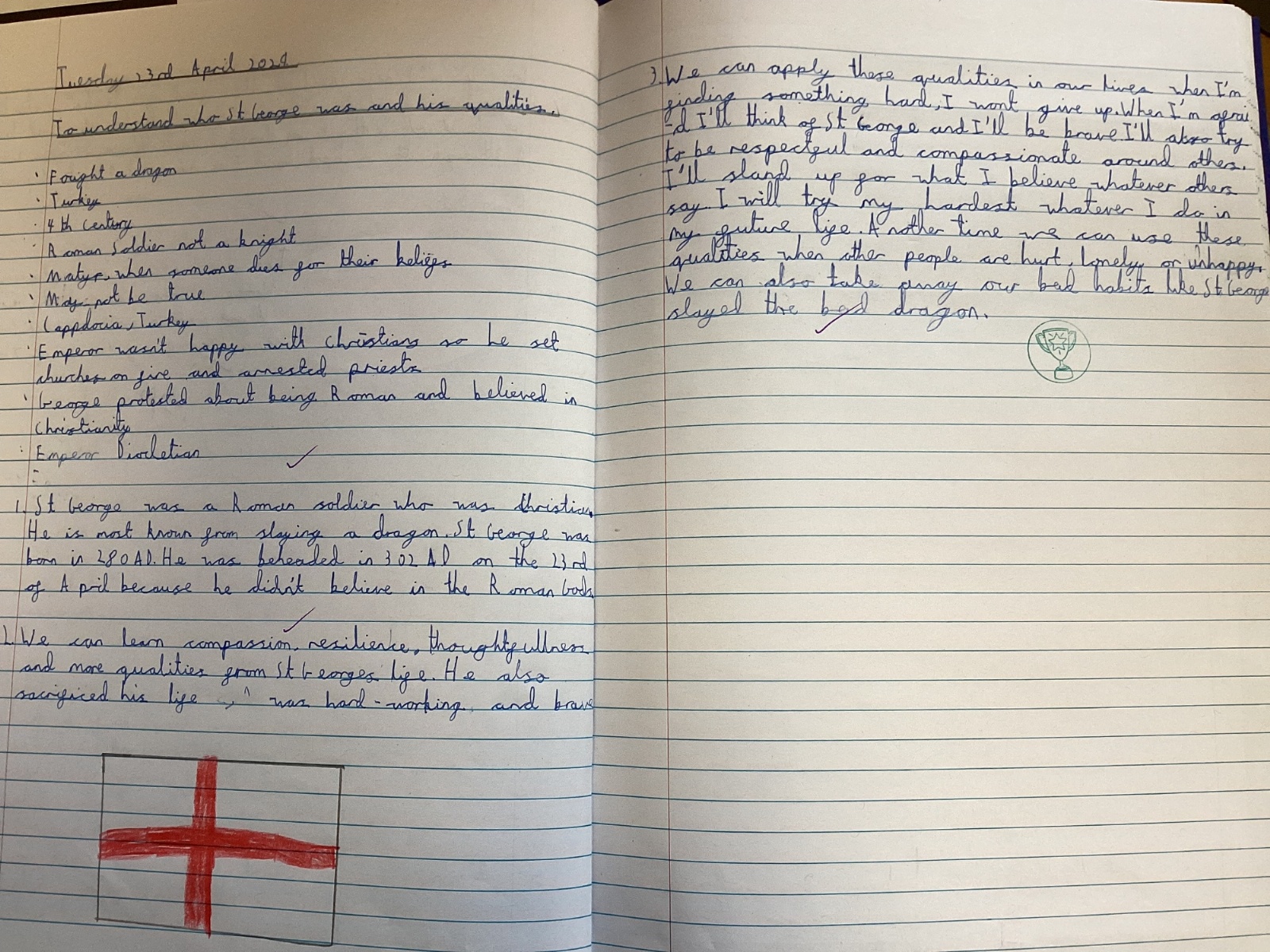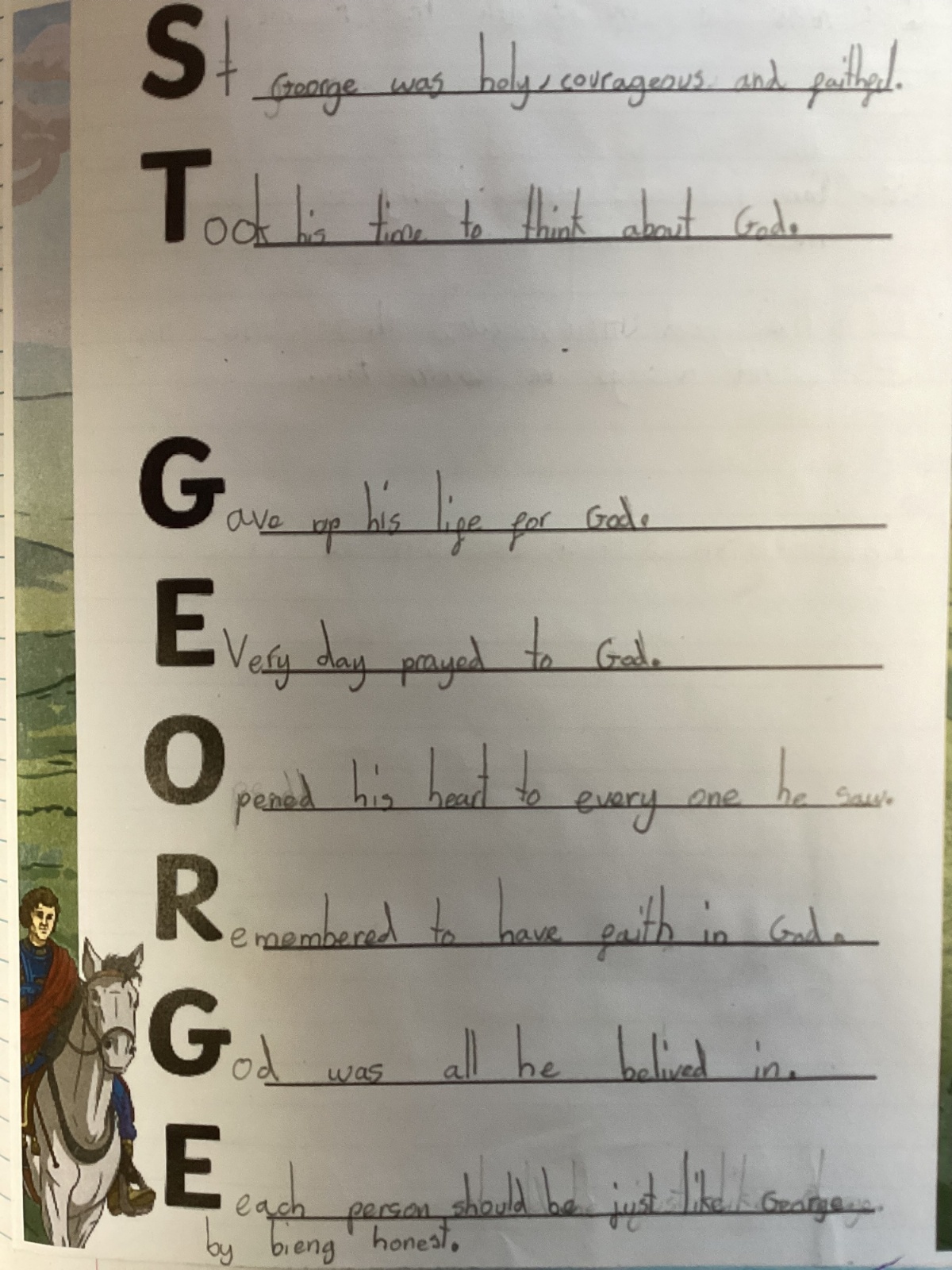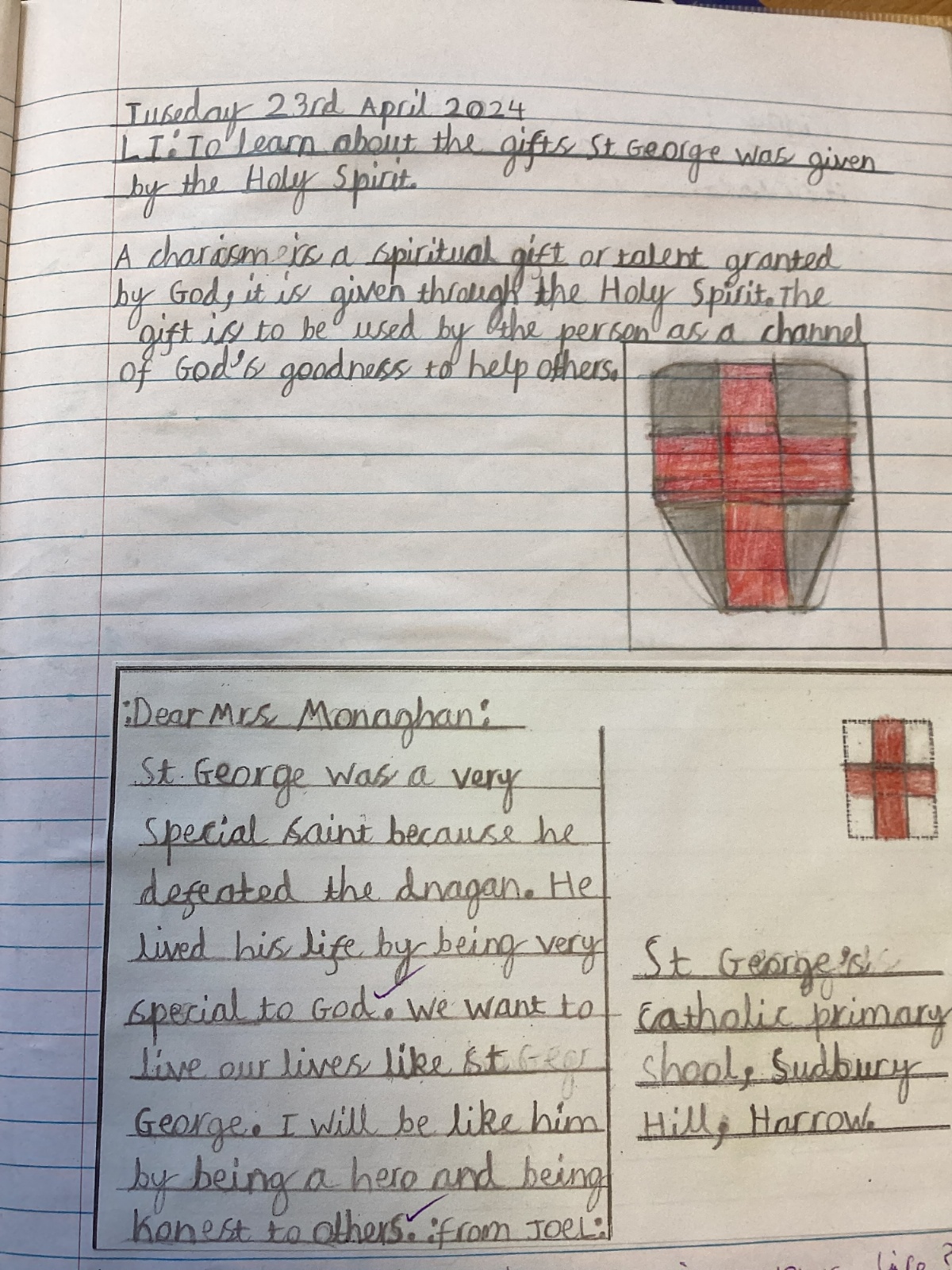School Saint
St. George - Our Patron Saint
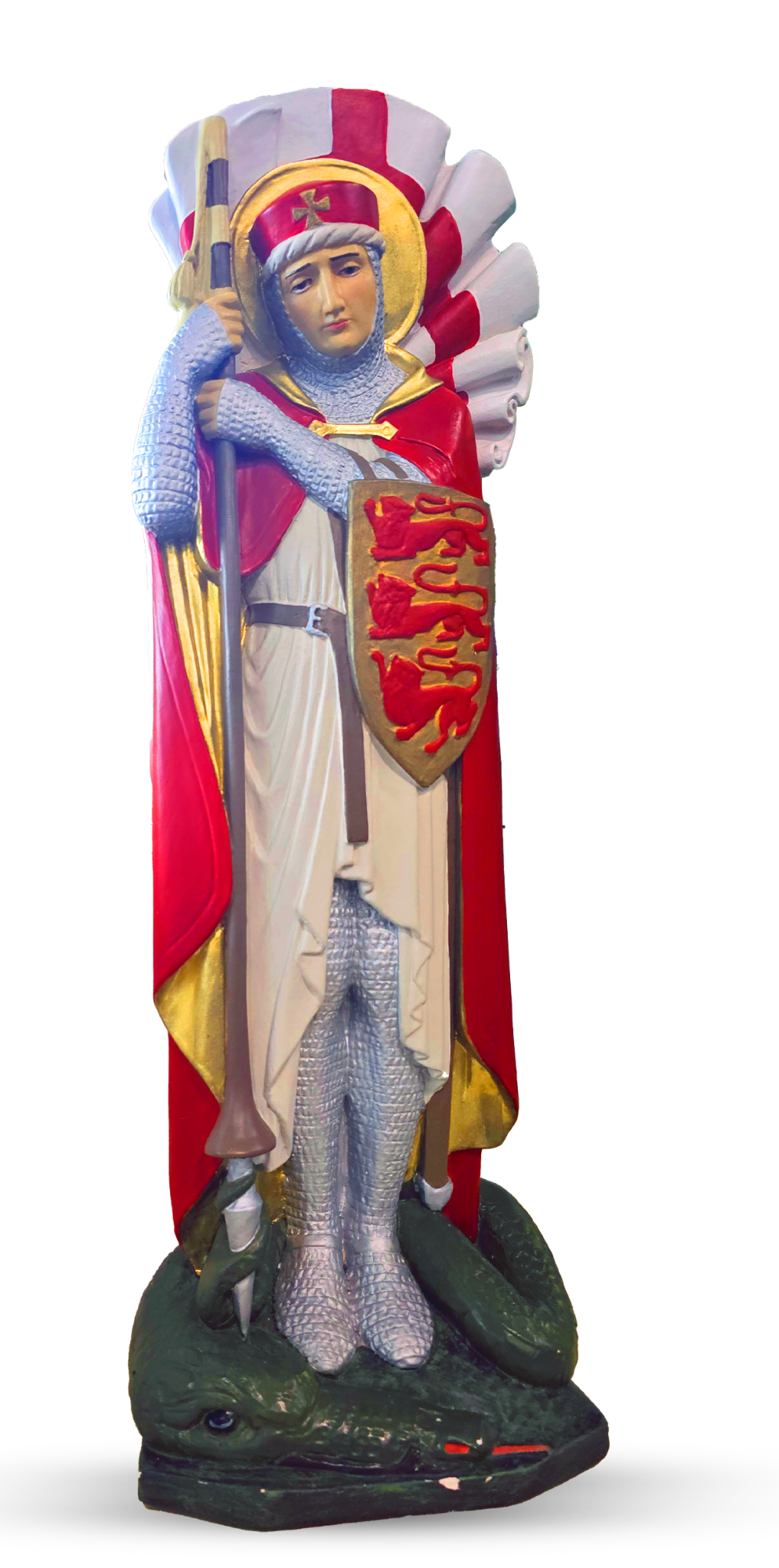
St. George is best known as a dragon slayer, patron saint, and Christian martyr. Legend describes St. George as a valiant knight who battled a mighty dragon, saving a princess and a village, before becoming a martyr for his faith. This story depicts good over evil and behind this epic tale lies a complex history of religious devotion and royal influence.
The true story is that St. George was a Roman soldier who became England’s patron saint.
Often depicted as a knight, St. George was born in Turkey in the 3rd century AD. He was a high-ranking officer in the Roman army who protested against the Romans’ torture of Christians. Roman emperor ordered his death for refusing to renounce his Christian faith. And that’s how he became a Christian martyr.
However, despite some of the most terrible torture, St. George showed incredible strength, courage and faith. His head was later taken to Rome where it was interred in the church dedicated to him.
Historians believe that he died as a martyr in Palestine in AD 303.
When Did St George Become a Saint?
Pope Gelasius I canonised St George in 494. The pope recognised him amongst those “whose names are justly revered among men but whose acts are known only to God”.
The 23rd of April, the date of St George’s martyrdom, has been celebrated as a feast day in England for centuries. The saint was recognised as the patron saint of England from the reign of Edward III in the 1300s.
St. George is truly a global saint. He is a respected saint in Portugal, Romania, parts of Greece, Catalonia and Egypt. He is also the patron saint of scouts and soldiers, amongst others.
George is seen as an especially powerful intercessor. That’s a person who uses prayer on behalf of others, which is why in our prayers in assembly at our school, we always say, “St George, Pray for us”.
When visiting Westminster Cathedral, take time to visit the Chapel of St George and The English Martyrs. In this chapel, we pray for those who have witnessed to their Catholic faith in our land. On the wall is a carving of St George, by Philip Lindsey Clarke.
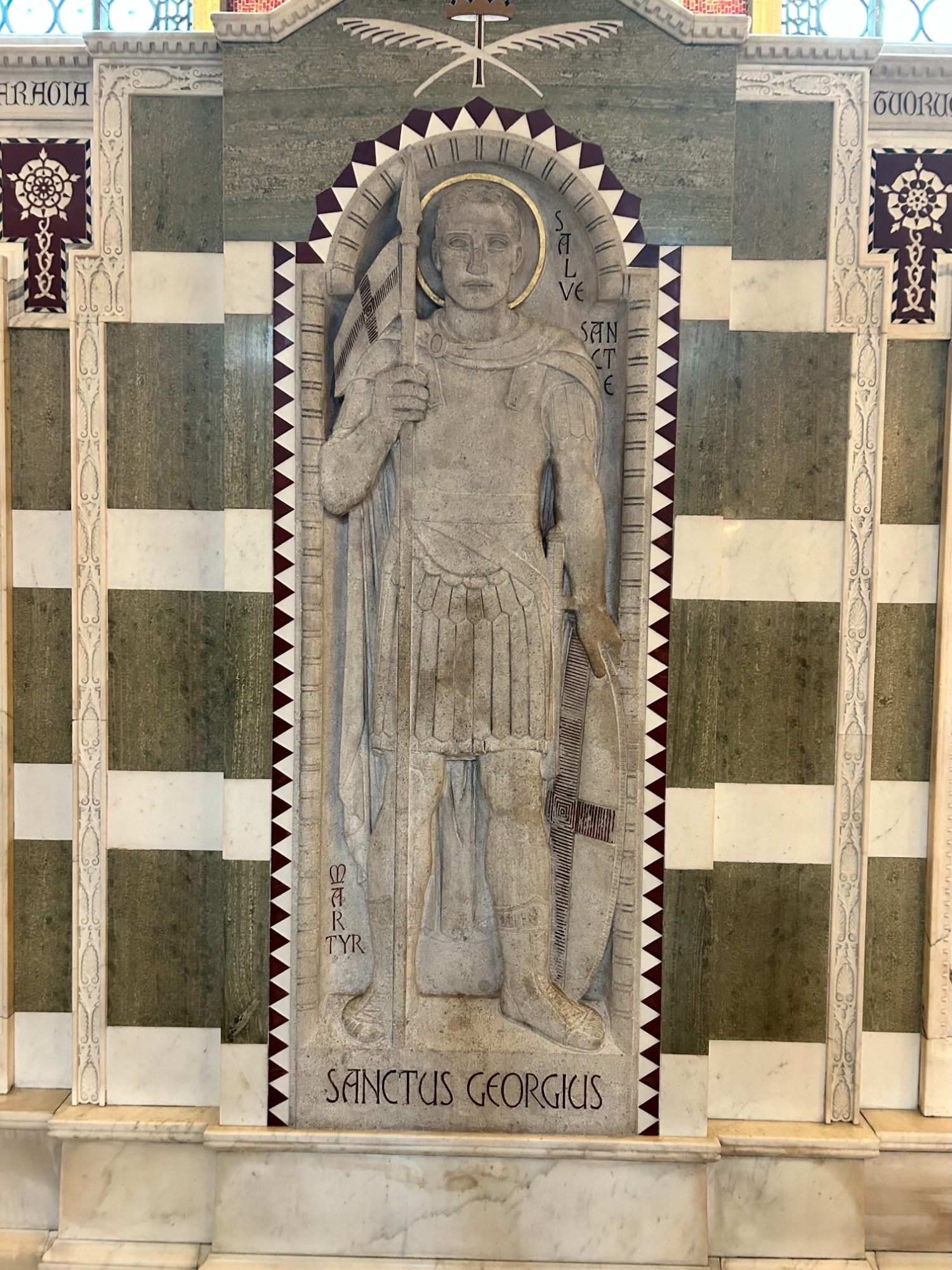
May 2024
Pupils were asked to reflect on the qualities of St George, what makes him a saint and how we can demonstrate some of these qualities in our daily lives. Congratulations to our competition winners who worked so hard on their entries!



